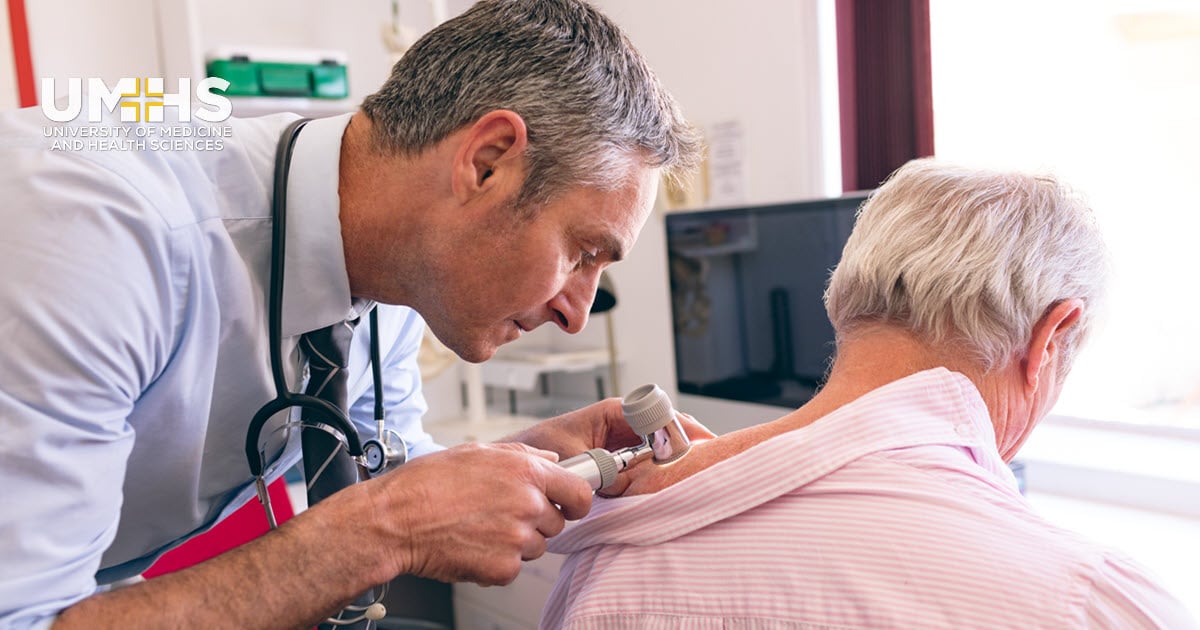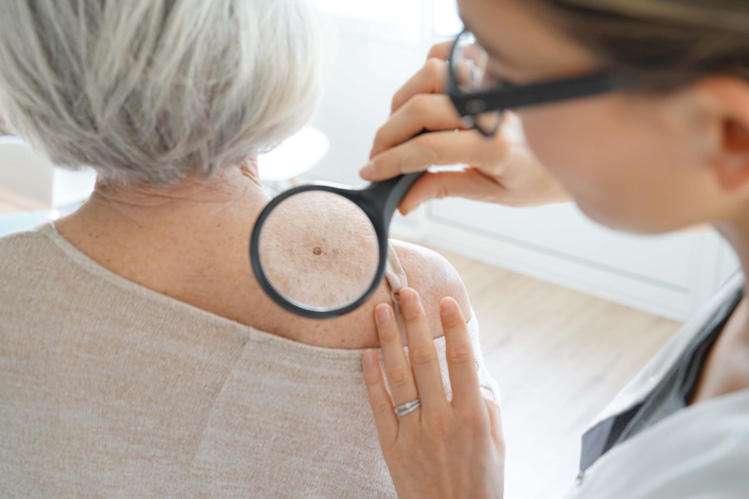In-Depth Dermatology Understanding: Dealing With Acne Issues, Mole Concerns, and Dermatitis Symptoms
When it pertains to skin health, comprehensive dermatology understanding is vital; it equips individuals to take on usual skin problems such as acne, mole irregularities, and dermatitis with self-confidence. Recognizing acne treatments, recognizing prospective skin cancer cells signs in moles, and handling eczema triggers can substantially boost skin wellness - mole removal. This short article will check out these subjects, using an informative check out the science behind these common skin issues - an exploration that assures to inform and educate
Recognizing the Essentials: What Is Acne, Moles, and Eczema?
While numerous people may recognize with the terms acne, moles, and eczema, recognizing what they actually are is a different issue altogether. Acne is a skin problem identified by swollen or infected oil glands, typically noticeable as acnes or spots, largely on the face, back, and chest. Moles, on the various other hand, are little skin growths triggered by clusters of pigmented cells; they can show up anywhere on the body and vary in shade and size. Dermatitis, likewise known as atopic dermatitis, is a persistent condition creating irritated, itchy skin, usually happening in response to toxic irritants or allergens. While these problems prevail, they can have varying degrees of seriousness and influence on a person's life.
The Scientific research Behind Acne: Causes, Types, and Therapies
The complex scientific research behind acne starts with comprehending its development system. This detailed process, influenced by numerous factors, leads to various kinds of acne. The post will certainly also touch upon reliable treatments available to handle and treat this usual skin disease.
Acne Development Mechanism
An overwhelming majority of individuals will experience the typical skin condition understood as acne eventually in their lives. Acne development starts with the overflow of sebum, an oily material produced by sweat glands in the skin. This excess sebum, in addition to dead skin cells, obstructs the skin's pores. When these blocked pores come to be contaminated with Propionibacterium acnes, a microorganism normally existing on the skin, swelling happens, leading to visible acne. There are different types of acne, consisting of blackheads and whiteheads (non-inflammatory), and papules, pustules, blemishes, and cysts (inflammatory) Hormone modifications, especially during puberty or menstrual cycle, can aggravate acne by causing boosted sebum manufacturing. Comprehending this mechanism is essential for developing effective therapies, a subject to be talked about later. eczema specialist.

Effective Acne Therapies
Nearly everybody will certainly grapple with acne at some factor, making a clear understanding of efficient acne treatments essential. Various treatments target various facets of acne, such as swelling, oil manufacturing, and germs. It's crucial to keep in mind that not all therapies will work for everyone, as acne's reasons and extent differ.
Mole Issues: Identification, Assessment, and When to Seek Medical Attention
Moles, usual skin developments, call for mindful recognition and routine assessment for ideal skin wellness (eczema specialist). Acknowledging the typical appearance of one's moles, along with any changes that might take place, is essential. Motivate clinical interest ought to be looked for when specific signs, which will be gone over, are discovered
Comprehending Mole Recognition
How does one compare a harmless mole and one that may require clinical attention? Understanding the features of typical moles is crucial. A regular mole is typically rounded or oval, has a smooth side, and is no larger than 6mm in size. The color should correspond and can vary from pink, tan, brownish, or black. Moles generally show up throughout youth or teenage years, and by their adult years, most individuals have between he said 10 to 40 moles. Moles that change in size, form, or color, end up being scratchy or bleed, or show up after age 30 can be alarming. These abnormalities do not immediately suggest skin cancer cells but are factors to get in touch with a skin specialist. Understanding mole recognition is the primary step in skin health and wellness monitoring.
Executing Normal Mole Examinations

Identifying Important Medical Signs
When should one look for clinical focus worrying moles? It is important to seek advice from a dermatologist as soon as uncommon features are discovered. These might consist of crookedness, uneven boundaries, varying colors, a diameter larger than 6mm, or progressing dimension, form, or shade. Referred to as the ABCDE's of mole evaluation, these changes may direct to deadly cancer malignancy, a harmful form of skin cancer. Furthermore, any kind of blood loss, itching, or non-healing sores related to moles demand prompt clinical focus. A person needs to also beware if new moles appear after the age anchor of 30 or if there's a sudden increase in the number of moles. Normal soul-searchings coupled with specialist analyses make certain very early discovery and efficient therapy of prospective skin irregularities.
Eczema Explained: Causes, Symptoms, and Taking Care Of Flare-Ups
Although dermatitis may appear as a simple skin irritation to the inexperienced eye, it is, actually, an intricate dermatological problem with a wide variety of potential causes. Eczema, also described as atopic dermatitis, is generally created by a combination of hereditary and environmental variables. Signs can vary from moderate dry skin and itching to extreme rashes and swelling. Triggers may range individuals, yet typical ones consist of allergens, toxic irritants, and stress. Handling eczema commonly involves recognizing and avoiding triggers, preserving a good skin care regimen, and using recommended therapies. Due to the persistent nature of eczema, flare-ups may still happen also with careful administration. The trick is to address these flare-ups quickly to protect against intensifying signs.
Practical Skin Care Tips to stop and Manage Acne, Moles, and Eczema
Understanding and resolving skin problems such as acne, moles, and dermatitis need practical and reliable skin treatment habits. A balanced diet plan abundant in antioxidants can boost skin wellness and lower swelling, possibly reducing acne and dermatitis seriousness. Routine skin checks aid in early mole detection, potentially avoiding skin cancer cells.
Expert Dermatology Treatments: A Review of Modern Solutions
What are the modern-day remedies offered by expert dermatology therapies? Skin doctors today have a wide array of effective treatment options to manage numerous skin problems. For acne, retinoids and anti-biotics are recommended to manage the condition, while chemical peels and laser therapy are made use of for serious situations. With moles, professional elimination is performed if they posture a wellness danger. This can be done with medical excision or laser elimination. On the various other hand, eczema is typically treated with topical corticosteroids to take why not find out more care of signs and symptoms, and phototherapy for consistent situations. Additionally, developments in biologics have revealed guarantee in dealing with extreme dermatitis. All these therapies are under the expert assistance and treatment of skin specialists, ensuring safe and effective monitoring of skin conditions.
Final thought
Comprehending skin-related problems like acne, mole irregularities, and dermatitis is crucial for efficient therapy. Acne management calls for understanding of different treatment choices, while mole examination can bring about very early detection of skin cancers cells. Dermatitis management includes recognizing triggers and carrying out ideal treatments. Therefore, comprehensive dermatology knowledge is crucial for avoiding and handling these skin conditions, stressing the demand for specialist skin doctor care to improve skin health and wellness.
Comments on “Consult an expert eczema specialist to manage your skin condition.”